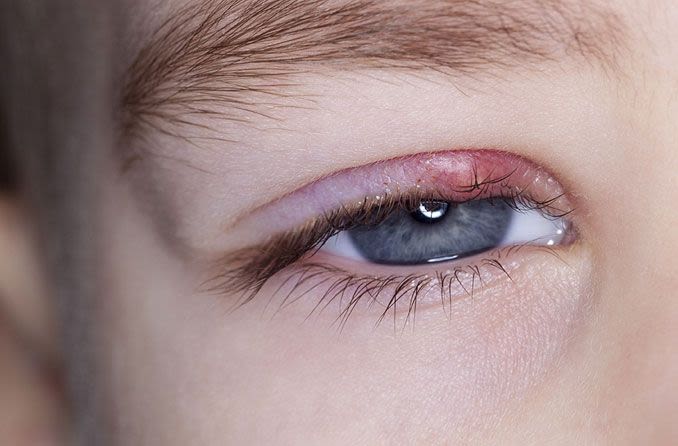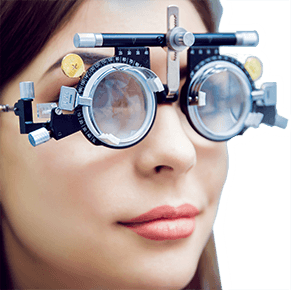How to Get Rid of a Stye

What is a stye?
A stye (or a hordeolum) is an infection in the eyelid that causes a tender, red bump near the edge of the eye. The infection starts with clogged oil glands at the base of the eyelash (external stye) or in one of the glands within the eyelid (internal) which then become infected.
You will usually only get a stye on one eye at a time, but they can occur on both eyes. Styes are usually a one-off thing and once you treat a stye it won’t come back but sometimes they can reoccur.
How do you get rid of a stye? (Stye treatments)
1. Clean your eyelids
The first thing you should do if you get a stye is cleanse your eyelids. You can use diluted tear-free baby shampoo on a cotton ball, flannel, or makeup remover pad. Then rinse your eyelids with warm water and gently pat them dry. You can also use a mild saline solution to cleanse your eyelids.
2. Wash your hands
Wash your hands before and after touching the stye, and don't share your towels or flannels with others.
3. Use an eyelid cleansing pad
Pre-moistened eyelid cleansing pads are another option. You can find these non-prescription items in most pharmacies.
4. Stop wearing eye makeup
It's wise to stop wearing eye makeup when you have a stye because covering it up can delay the healing process. Also, throw away old makeup or applicators that could be contaminated.
5. Wear your glasses (not contact lenses)
Wear glasses rather than contact lenses until the stye heals.
6. Apply warm compresses
You can speed up the healing of a stye by applying warm compresses and gently massaging the stye for 10 to 15 minutes, three or four times a day.
7. Try a teabag or warm flannel
Some people use teabags to treat styes, but a basic clean flannel dipped in warm (not hot) water will do the trick. Wring the cloth so it is not dripping, then place it over your closed eyes. If you want to try a teabag wait until it cools so it is warm, not hot, and keep it on your eyelid for about 5 to 10 minutes. Use a different tea bag for each eye if you have more than one stye.
8. Don't pop a stye
The goal of popping a stye is to try to drain the stye quickly as you would do like popping a pimple. But whatever you do, don't get anxious and try to pop the stye! The warmth from a warm compress often will allow it to open, drain and heal on its own without causing trauma to the eyelid or possibly spreading the infection by squeezing it.
9. Use antibiotic creams
While you can use over the counter antibiotic creams to help heal a stye, make sure you use creams specifically made to be used in the eye and avoid topical steroids. Examples are chloramphenicol or golden eye ointment.
How do you relieve stye pain?
Painkillers: Over-the-counter painkillers like acetaminophen and ibuprofen may ease pain or discomfort and they will help to make the stye heal faster.
How do you prevent styes?
There are a few things you can do to help prevent styes.
Clean your face and remove your makeup each night.
Wash your eyelids every day with diluted baby shampoo.
Use an eyelid wash from your chemist.
Always wash your hands before touching your contacts and make sure you disinfect and clean your contacts according to the manufacturer’s instructions.
Bacteria can grow on makeup so replace your eye makeup every 2-3 months. Never share makeup with anyone else.
Avoid rubbing your eyes if they are itchy and especially if you haven’t just washed your hands.
Avoid sharing towels or masks with someone who has a stye.
How long does a stye last?
In most cases a stye will go away with home treatments within 3 to 5 days. The swelling should start to decrease after 2 to 3 days. If you need to see your doctor or use antibiotics for a more serious stye, it should still be gone within about a week.
If you have styes that keep coming back, you might have problems with blepharitis. Taking steps to quickly treat this eyelid problem also will help prevent any recurrences.
When to see an optician for a stye
You should see your optician or GP if:
Your stye doesn't get better after a few days.
Your stye gets worse.
Your actual eye hurts rather than just your eyelid.
It’s affecting your vision.
Your eyelid swells up or gets very red.
If your eye won't open all the way.
Is internal and home remedies or OTC solutions aren't helping
If the stye continues to get larger
Stye surgery
In some cases, styes may require minor surgery by an ophthalmologist, followed by a prescription stye medicine or antibiotic. If your doctor recommends surgery, it is a fairly simple procedure to open and drain the stye.
FIND AN OPTICIAN: An optician can assess your vision, find an optician near you.
Eyelid bump. MedlinePlus, National Library of Medicine. February 2021.
What are chalazia and styes? American Academy of Ophthalmology. November 2020.
Ophthalmology, 4th Edition. Elsevier. 2013.
Is it OK to pop a stye? American Academy of Ophthalmology. March 2014.
Stye. Mayo Clinic. July 2020.
Page published on Tuesday, 25 June 2019






